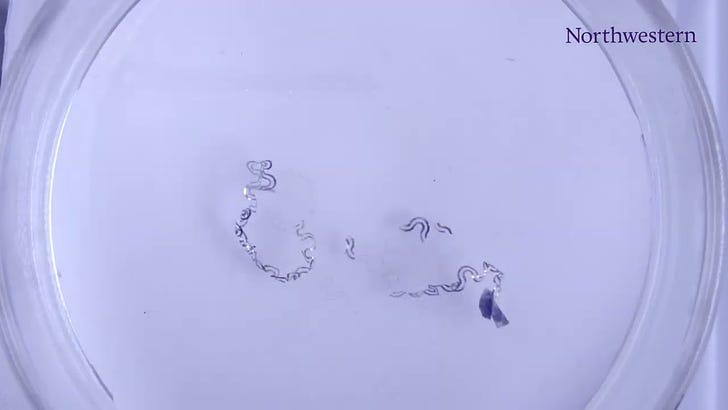👽 Photosynthesis In Darkness
Hey there, I'm Emil Protalinski and this is FiToSci, a newsletter that tracks how humanity is taking the fiction out of science fiction. FiToSci is taking a break for the summer as I look for work (if you need a tech writer, editor, or consultant, please don't hesitate to reach out).
I leave you with a handful of stories that caught my eye this past week:
🧬 Scientists created artificial photosynthesis using a two-step electrocatalytic process to convert carbon dioxide, electricity, and water into acetate, which is then consumed by food-producing organisms to grow, bypassing the need for biological photosynthesis to create food independent of sunlight. Cultivating plants in darkness will come in handy if humanity is forced to move underground or off-planet.
🧬 Researchers developed a small, soft, flexible implant that relieves pain on demand, without using drugs, and that can naturally absorb into the body after it is no longer needed. How long will it take for the war on drugs to expand to implants?
🚀 NASA selected three design concept proposals from Lockheed Martin, Westinghouse, and IX, each valued at approximately $5 million, for a 40-kilowatt class fission power system planned to last at least 10 years on the Moon. If we're going use our closest space rock as a jumping off point for further exploration, we're going to need many lunar nuclear power plants.
🚗 A group of Cruise robotaxis blocked traffic for a couple of hours until employees arrived and manually moved the autonomous vehicles. As long as the biggest problem is a robotaxi fleet stopping en masse and refusing to move, as opposed to moving en masse and refusing to stop, I think we're okay.
🤖 Researchers demonstrated an EEG headset combining ghost imaging with human vision to display an object that can't directly be seen by the observer. Put another way, we now have AI technology that can let humans see through walls with X-ray vision.
🤖 Data and social scientists developed an AI algorithm that forecasts crime by learning patterns in time and geographic locations from public data on violent and property crimes, predicting future crimes one week in advance with about 90% accuracy. Neither this development nor the predictive policing program that got a man shot twice manage to recreate Minority Report, but we're getting there.
🤖 OpenAI's GPT-3 model wrote an academic thesis titled "Can GPT-3 write an academic paper on itself, with minimal human input?" That eerie sound is the collective scientific community holding its breath while a peer-reviewed machine intelligence journal weighs the submission.
🤖 Commissioner Rob Manfred revealed Major League Baseball plans to introduce automated ball-strike zone system, or "robot umpires", in 2024. Anything that makes watching the game less boring is a win in my books.
👓 Mojo Vision CEO Drew Perkins wore a fully functioning AR contact lens on one of his eyes, the first person to do so, as part of a plan to have the company's executive team, partners, investors, and maybe even journalists try the device before the end of 2022. Mojo Vision unveiled its latest hard lens prototype running an operating system and user experience components in March 2022, but that demonstration consisted of putting the AR device on a stick in front of one's eye.
Thank you for reading FiToSci! As a treat for reading right to the very end, watch this video about acoustic levitation.


